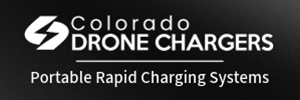You are using an out of date browser. It may not display this or other websites correctly.
You should upgrade or use an alternative browser.
You should upgrade or use an alternative browser.
BATTERIES
- Thread starter RyanDG
- Start date
keep them about half charge for peace of mind
tmiller
Well-Known Member
Which batteries are you referring to? Mini do not need the discharge like the MP and MPP.
Minis have dumb batteries, unlike the intelligent ones on the other DJI drones. But they still should be discharged if stored for more than 10 days, to keep them happy. They just can’t do it by themselves, like the smart ones.Which batteries are you referring to? Mini do not need the discharge like the MP and MPP.
tmiller
Well-Known Member
Minis have dumb batteries, unlike the intelligent ones on the other DJI drones. But they still should be discharged if stored for more than 10 days, to keep them happy. They just can’t do it by themselves, like the smart ones.
Unless I'm mistaken...LIPO (MP and MPP) require the batteries to be stored partially discharged but the LION (Mini) does not have that requirement.
Wild Wayne
Well-Known Member
Mavic Mini User Manual page 20
The Mavic Mini Intelligent Flight Battery cannot discharge automatically. If the battery will not be used for more than 10 days, it is recommended to discharge the battery manually until the battery level is between 39% and 75%.
The Mavic Mini Intelligent Flight Battery cannot discharge automatically. If the battery will not be used for more than 10 days, it is recommended to discharge the battery manually until the battery level is between 39% and 75%.
tmiller
Well-Known Member
Mavic Mini User Manual page 20
The Mavic Mini Intelligent Flight Battery cannot discharge automatically. If the battery will not be used for more than 10 days, it is recommended to discharge the battery manually until the battery level is between 39% and 75%.
Another WIN for this forum! I stand corrected @Wild Wayne You are correct, I missed that and obviously misunderstood this conversation in other forum posts. Thank you!
WithTheBirds
Well-Known Member
- Joined
- Sep 2, 2018
- Messages
- 2,560
- Reactions
- 1,601
You are mistaken. LiPO is a type of LiION cell. Keeping the cells at or close to full SOC will have the same detrimental effect to usable capacity (increased internal resistance) and will reduce service life.Unless I'm mistaken...LIPO (MP and MPP) require the batteries to be stored partially discharged but the LION (Mini) does not have that requirement.
Drony_Drone
Well-Known Member
This is info collected together I found from official MM manual if helps anyone.
Mavic Mini battery tips
- [ ] Fully charge the battery at least once every three months to maintain battery health.
- [ ] Battery capacity is significantly reduced when flying in low temps (/5° to 5° C). It is recommended to hover the aircraft in place temporarily to heat the battery.
- [ ] The MM battery cannot discharge automatically. If the battery will not be used for more than 10 days, it is recommended to discharge the battery manually until the battery level is between 39% and 75%.
- [ ] Hibernation Mode: If the battery cell voltage is lower than 3.0 V, the battery enters Hibernation mode to prevent over-discharge. Charge the battery to wake it from hibernation.
Mavic Mini battery tips
- [ ] Fully charge the battery at least once every three months to maintain battery health.
- [ ] Battery capacity is significantly reduced when flying in low temps (/5° to 5° C). It is recommended to hover the aircraft in place temporarily to heat the battery.
- [ ] The MM battery cannot discharge automatically. If the battery will not be used for more than 10 days, it is recommended to discharge the battery manually until the battery level is between 39% and 75%.
- [ ] Hibernation Mode: If the battery cell voltage is lower than 3.0 V, the battery enters Hibernation mode to prevent over-discharge. Charge the battery to wake it from hibernation.
Jimbo in Thailand
Member
You are mistaken. LiPO is a type of LiION cell. Keeping the cells at or close to full SOC will have the same detrimental effect to usable capacity (increased internal resistance) and will reduce service life.
Sorry, that's incorrect. LiPo is a type of lithium cell. So is Li-Ion. Even though both LiPo and Li-Ion battery types are lithium based, they have different characteristics due to their chemical makeup. Lithium Polymer batteries tend to be lighter with more capacity, while Lithium-Ion cells have more energy density and aren't picky about charge/discharge variations and ensuring precise storage voltage. They both have about the same number of rated discharge cycles (300-400 cycles). Here's a helpful LiPo vs Li-Ion link: Lithium Ion vs. Lithium Polymer - What's the Difference?
WithTheBirds
Well-Known Member
- Joined
- Sep 2, 2018
- Messages
- 2,560
- Reactions
- 1,601
I’m sorry but you are demonstrably wrong. LiPO is LiION polymer. For the purpose of the discussion here, particularly with respect to charging, storing and service life there is no difference of significance. liPO is more expensive to produce but offers more flexibility in cell physical size/shape. The slight increase in energy density is realised by the absence of rigid packaging, ie pouch vs metal can. To the extent you may wish to identify a significant distinction in lithium chemistry you might compare lithium metal anode cells to LiION- that discussion has no relevance here.Sorry, that's incorrect. LiPo is a type of lithium cell. So is Li-Ion. Even though both LiPo and Li-Ion battery types are lithium based, they have different characteristics due to their chemical makeup. Lithium Polymer batteries tend to be lighter with more capacity, while Lithium-Ion cells have more energy density and aren't picky about charge/discharge variations and ensuring precise storage voltage. They both have about the same number of rated discharge cycles (300-400 cycles). Here's a helpful LiPo vs Li-Ion link: Lithium Ion vs. Lithium Polymer - What's the Difference?
Jimbo in Thailand
Member
I’m sorry but you are demonstrably wrong. LiPO is LiION polymer. For the purpose of the discussion here, particularly with respect to charging, storing and service life there is no difference of significance. liPO is more expensive to produce but offers more flexibility in cell physical size/shape. The slight increase in energy density is realised by the absence of rigid packaging, ie pouch vs metal can. To the extent you may wish to identify a significant distinction in lithium chemistry you might compare lithium metal anode cells to LiION- that discussion has no relevance here.
LOL "demonstrably wrong" Hahaha! Have a nice day WithTheBirds!
LOL "demonstrably wrong" Hahaha! Have a nice day WithTheBirds!
What’s the Difference?
A lithium-ion battery is a rechargeable battery format that first grew in popularity thanks to their adoption by major electronics companies in the early 1990s. They are essentially a group of very rigid electricity generating compartments, which consists of three pieces: a positive electrode; a negative electrode; and an electrolyte, or liquid chemical compound between them. Most lithium-ion batteries, unlike more traditional ones, also include an electronic controller, which regulates power and discharge flows so your battery doesn’t overheat or explode.
The most significant difference between lithium-ion and lithium-polymer batteries is the chemical electrolyte between their positive and negative electrodes. In Li-Po batteries it isn’t a liquid. Instead, Li-Po technology uses one of three forms: a dry solid, which was largely phased out during the prototype years of lithium polymer batteries; a porous chemical compound; or, a gel-like electrolyte. The most popular among these is the last one, which is the type of battery you’ll find in newer laptop computers and electric cars. The catch is that plenty of companies are not actually selling you a true Li-Po battery, instead it’s a lithium-ion polymer battery, or a Li-ion in a more flexible casing.

Lithium Ion vs. Lithium Polymer Batteries – Which Is Better? - RAVPower
We go deep into the lithium-ion versus lithium-polymer debate and find out the benefits and drawbacks of each battery type! Which is better for you?
 blog.ravpower.com
blog.ravpower.com
explorer76
Member
- Joined
- Oct 28, 2018
- Messages
- 9
- Reactions
- 7
- Age
- 45
Can i store the batteries on battery charger hub for 7 days without charge or low charge?
Pretty much what has been already set, but keep them in ~50-60% the charge to slow their aging...
Fun fact: 0% is not actually zero, as DJI smart circuits give you a lower reading than actual to keep your batteries from getting bricked
J2ps
Well-Known Member
well shucks, I have 4 batteries, bad wind for a while. Guess I'll fly around the house half a dayMavic Mini User Manual page 20
The Mavic Mini Intelligent Flight Battery cannot discharge automatically. If the battery will not be used for more than 10 days, it is recommended to discharge the battery manually until the battery level is between 39% and 75%.
Xanadu
Well-Known Member
If you have the hub charger you can alternatively use it as a power bank and charge, for example, your phone to lower their voltage to the desired level.
Similar threads
- Replies
- 8
- Views
- 1K
DJI Drone Deals
New Threads
-
Air 2s Ronda, the most well known of the White Villages of Southern Spain
- Started by FlyingDutchman90
- Replies: 0
-
-
-
-









